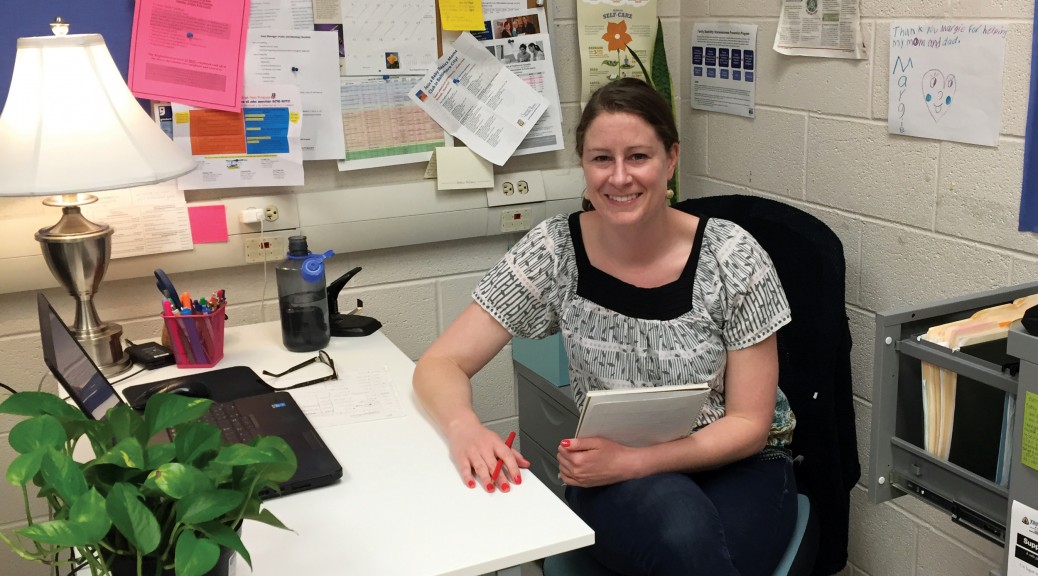When Marta first met Margie Hatch, the family stability case manager at Highlandtown Elementary/Middle School #237, her children’s father had – unbeknownst to Marta – stopped paying the rent for the family’s apartment.
“Unless she could get $4,600 together,” Hatch recalled, “she and her three kids would be evicted and need to move to a homeless shelter.”
Marta’s story is, unfortunately, an example of how one difficult and unexpected occurrence – an illness or injury, a death in the family, the end of a relationship, the loss of a job, or even car trouble – can snowball, with destabilizing effects lingering for months, years or decades.
Highlandtown #237’s family stability program – administered by Hatch, an employee of the Southeast Community Development Corporation – was established to help families such as Marta’s to, first, stay in their homes and keep their utilities on, and, secondly, transition toward a financial durability that makes future crises less likely.
Why tie such a program to a school?
While the parents deal with the precipitating events and the fallout, their children are burdened with an all-consuming and often-overlooked stress, explained Denise Ashley, principal of Highlandtown #237.
“While we’re always thinking we’re hiding things from our children, we aren’t,” she said. “Even if a young child doesn’t know the lights are about to be shut off, or the family is about to be evicted, they know that mom and dad are worried.”
Even worse, Ashley continued, is when the lights are actually shut off or the family is forced to leave their home, a traumatic experience for children which interrupts their education and threatens to throw them off track for years to come.
Preventing such circumstances, known as “student mobility,” is a key aspect of promoting family stability. Using a model established by the Siemer Institute for Family Stability, the United Way of Central Maryland is providing the overall framework and funding for 11 family stability programs across Baltimore City – including Highlandtown #237 – and in neighboring counties. The United Way also provides the training and evaluation for the network of programs.
The Highlandtown #237 program receives additional financial support from the Baltimore Community Foundation.
Though she has a phone and email at the Southeast CDC, Hatch works primarily out of the school.
“It makes so much sense for me to be in a place where families are coming every day,” she said. “It’s bringing the service to families rather than just giving them phone number and saying, ‘Here you go – go for it.’”
In its first year, Highlandtown #237’s family stability program has served 25 families.
“Margie’s real easy to talk to,” Ashley said. “I’ve taken a lot of very stressed families into her office, and they’ve come out with their shoulders not as tight – I can see a difference.”
The office serves not only families with children at Highlandtown #237, but also those with children at Highlandtown Elementary/Middle School #215 and John Ruhrah Elementary/Middle School.
Hatch has several tools, including short-term financial assistance to “pay down those bills and stave off impending eviction or utility shut-off,” as well as longer-term financial coaching and goal-setting, over a six- to nine-month period.
“We talk about attitudes toward money,” she said.
She will ask clients if they feel that the financial services they use actually cost too much, for example.
“That’s a way of asking if they use check-cashing places without actually asking it,” she said.
The objective is not so much for her to gain information about her clients but for them to learn about themselves.
“We can then use that information to help them set goals for themselves,” Hatch said. “It could be that they want to get a bank account, or that they simply want to pay their bills on time. Some families are working to improve their credit scores. It’s different for everyone.”
Referrals to city services, budgeting workshops and spending plans are some of the ways of getting there.
“It’s me helping them reach their goals, rather than doing the leg work for them,” Hatch explained.
The approach has been successful.
For Marta’s family, Hatch helped facilitate a meeting between her, the landlord, and her children’s father, preventing an eviction without resorting to the courts. The father started a debt repayment plan to pay down the rent due.
Marta has a lease in her name now and, for the first time, is building a renter’s history. She is working – with the help of other Southeast CDC-associated programs – toward building her credit, opening savings accounts for her children, and eventually buying her own home.
Most importantly, she and her three children have remained in their home and in their school zone.
“We certainly hope that this program continues because it has been so beneficial for our children,” Ashley said, adding that the “very specific resources that Margie is able to tap into” are crucial for providing stability.
“Our young students deserve an opportunity to be stable in a home where they have what they need,” she said.
